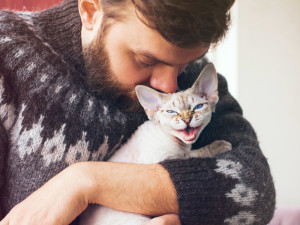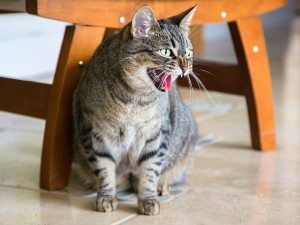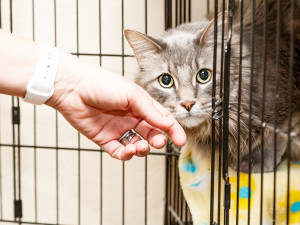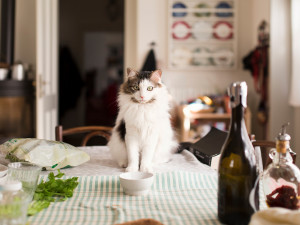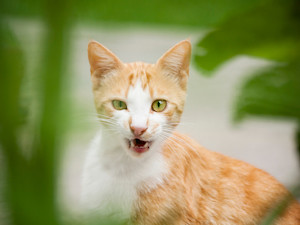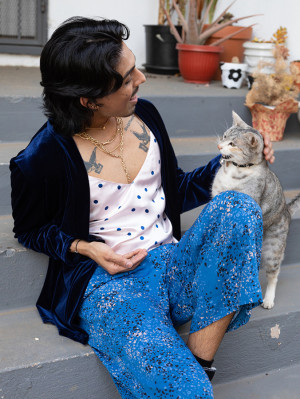Me-OW! Should I Break Up a Cat Fight?
Between actual cats...
If you’ve ever watched cats who are serious about playing with each other, you know that play between cats can get, well, rather serious, and not always in a good way. What starts out as play can escalate into a fight if the cats become too aroused, if one cat gets hurt or takes offence to excessive rough behaviour by the other cat.
Distinguishing play fights from real fights poses a challenge, and not only because it’s possible for play to morph into aggression in a matter of seconds. The way cats play can look a lot like the way cats hunt or fight, too. An understanding of feline body language and behaviour is the key to telling playful behaviour apart from aggressive behaviour.
The similarities between hunting, fighting and playing are no accident. In all playful species, including cats, behaviour patterns in play are borrowed from other aspects of their lives. That means the stalking, chasing and pouncing necessary to catch prey and the wrestling, posturing and biting required to defeat rivals show up in play, though in modified forms.
To keep everybody safe and happy requires being able to distinguish play-fighting from real fighting. It’s important to know when intervening is the wisest course of action. It’s also valuable to be able to recognise a situation in which the cats are having wholesome feline fun and should be allowed to continue enjoying themselves.
Is one cat trying to get away?
The number one rule about assessing play to determine if it is all in good fun or leaning towards trouble is that everybody should be having a good time. If one cat is trying to get away, especially if they slink away to hide, then it’s not wise to let it continue. If both cats are actively engaged in chasing, wrestling, pouncing or other interactive behaviours without either one showing signs of being upset or stressed, then let them carry on. Otherwise, separate the cats for the well-being of all.
Are the cats taking turns?
When cats are playing, they tend to take turns. They switch off who is being chased and who is in what position if they wrestle. Their bodies are generally relaxed, their motions are fluid, they keep their claws in and they aren‘t making lots of noise. They are often interacting face-to-face and their ears are typically held up or facing forwards. Gentle play bites are common, though not hard. Such use of the mouth should never cause pain, and certainly should not puncture the skin or leave a mark.
Are they taking breaks?
Feline play that is a positive experience for all participants typically includes periodic pauses and breaks. Pauses don’t last long, but a second or a few seconds to regroup are a good sign. Cats who are good play buddies tend to exhibit calm, affiliative behaviour when they are together but not playing. Such behaviour can include lying near one another, touching noses or grooming each other.
Does either cat have their claws out and/or fur up?
If the cats have dilated pupils, wide-open eyes, pinned back ears or a twitching vertical tail, they’re not relaxed and happy and the interaction is probably not playful. Similarly, if their claws are out, they are showing their teeth, or the fur is up on their backs or tails, trouble may be brewing. If their orientation relative to each other is perpendicular, that is a sign of tension, and if their motions are choppy and abrupt, they may be fighting.
At the risk of stating the obvious, it’s more likely to be a fight than play if they are hissing, growling, screeching, swatting at or biting each other. If cats are tense when together in other situations and contexts, it’s more likely that what they are doing when actively engaged with one another is not playful in nature.
Distinguishing cats who are having fun playing with each other from cats who are fighting is important. Nobody likes a catfight. Getting injured or scared is no fun for cats, and it’s upsetting for people who see it happen. Trouble is, lots of cats are having fun behaving in ways that resemble fights, but are actually playful. Spot the difference and you can be the difference maker in the lives of your cats.


